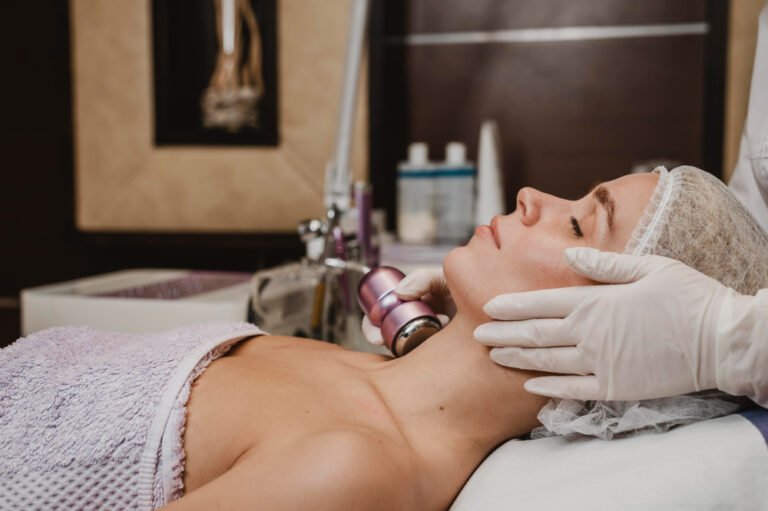While labiaplasty is often associated with adult women seeking aesthetic enhancement, an increasing number of teenagers are exploring the procedure for medical and functional reasons. When enlarged labia cause pain, discomfort, or emotional distress, medical labiaplasty may be considered—even during adolescence.
If you’re a parent of a teen experiencing these issues, it’s important to understand the facts, risks, benefits, and ethical considerations involved. This guide outlines what parents should know about teen labiaplasty, how to approach the subject with sensitivity, and when surgery may be medically necessary.
👩⚕️ Why Do Some Teens Consider Labiaplasty?
Teens may seek labiaplasty for both medical and psychological reasons, often stemming from early-onset labial hypertrophy (enlarged inner labia). For many, the issue isn’t cosmetic—it’s functional and emotional.
🔹 Common Complaints Among Teens:
- Pain or discomfort during physical activity like running, cycling, or horseback riding
- Irritation from tight clothing, especially leggings or swimsuits
- Self-consciousness in gym class or locker rooms
- Embarrassment about visible labial bulging through clothing
- Emotional distress or body image concerns related to perceived “abnormality”
- Difficulty with hygiene, recurrent infections, or urinary issues
🧬 Understanding Labial Hypertrophy in Teens
The labia develop and change during puberty due to hormone fluctuations. In some girls, the inner labia may grow more than expected and protrude significantly beyond the outer labia. This can occur naturally and isn’t necessarily abnormal—but when it interferes with quality of life, it becomes a medical concern.
There is no universal “normal” for labial size, but extreme elongation can cause functional limitations.
🩺 When Is Teen Labiaplasty Medically Justified?
A healthcare provider may consider labiaplasty medically necessary in cases where:
- The teen experiences chronic chafing, pain, or infections
- Physical activity is limited or avoided due to discomfort
- Hygiene is compromised, leading to urinary or vaginal issues
- The anatomy causes ongoing emotional or psychological distress
- Other conservative measures (like anti-chafing creams or clothing adjustments) have failed
🔎 The Role of Parental Support and Informed Consent
For minors, informed consent must involve both the teen and their parent or legal guardian. A careful and sensitive discussion with a board-certified plastic surgeon or gynecologist is essential.
Parents Should:
- Listen without judgment and validate their teen’s concerns
- Ensure that surgery is teen-driven, not based on parental aesthetic preference
- Confirm that non-surgical solutions have been explored
- Seek a second opinion to validate the medical necessity
- Choose a surgeon experienced in adolescent care
⏳ Timing: Should Teens Wait Until Adulthood?
Most surgeons recommend waiting until age 16 to 18, when:
- Puberty and genital development are largely complete
- Hormonal fluctuations have stabilized
- The teen is more emotionally mature to make a long-term decision
However, in cases of severe physical pain or functional impairment, surgery may be considered earlier on a case-by-case basis.
🛠️ Procedure and Recovery: What to Expect
✅ The Surgery:
- Performed under general anesthesia or local anesthesia with sedation
- Duration: About 1–2 hours
- Techniques: Trim or wedge method, depending on anatomy
✅ Recovery Timeline:
- 1 week: Light activity only
- 2–4 weeks: Resume most school and non-strenuous activities
- 6 weeks: Full recovery, including sports and physical education
- Minimal scarring and long-lasting results
✅ Emotional Support:
- Teens may benefit from mental health counseling to process body image concerns and post-surgical emotions
❌ Risks and Considerations
While labiaplasty is generally safe, especially in experienced hands, it’s essential to weigh the risks:
- Infection or bleeding
- Scarring or changes in sensation
- Asymmetry or dissatisfaction with the result
- Future hormonal changes may still alter genital appearance
This is why many surgeons approach teen labiaplasty conservatively, only recommending it when the medical need is clearly documented.
📋 Is Teen Labiaplasty Covered by Insurance?
Insurance may cover the procedure if:
- It’s deemed medically necessary
- Symptoms such as pain or infection are well-documented
- A healthcare provider submits a letter of medical necessity
Parents should contact their insurance company to understand coverage guidelines and pre-authorization requirements.
✅ Checklist for Parents: Key Questions to Ask
| Question | Why It Matters |
|---|---|
| Has puberty fully progressed? | Prevents future tissue changes after surgery |
| Is the discomfort affecting quality of life? | Helps define medical necessity |
| Has the teen tried conservative solutions? | Ensures surgery is a last resort |
| Does the surgeon have experience with teens? | Improves safety and outcomes |
| Is your teen emotionally ready? | Ensures long-term satisfaction and mental readiness |
🏁 Final Thoughts
Labiaplasty for teens is a deeply personal decision that involves sensitive anatomy and emotional maturity. While not right for everyone, in medically necessary cases, it can offer real relief and improved quality of life.
If your teen is suffering due to enlarged labia, start by speaking with your pediatrician or a specialist. Open communication, education, and professional guidance can help you make the best choice for your child’s health and well-being.



